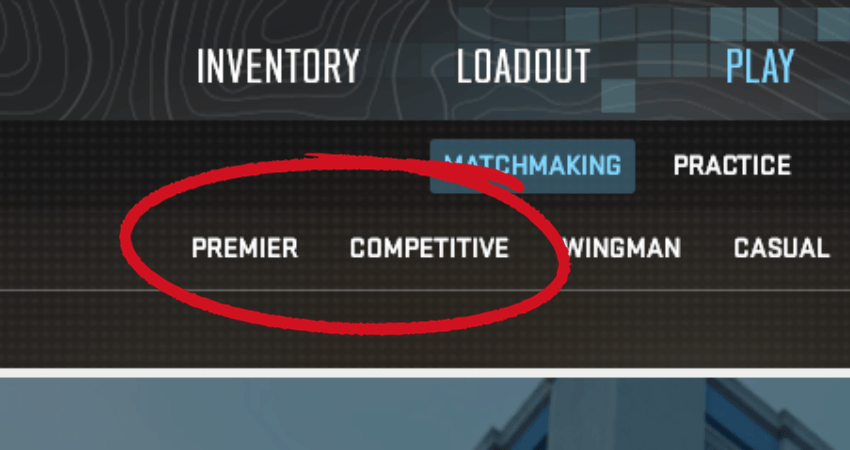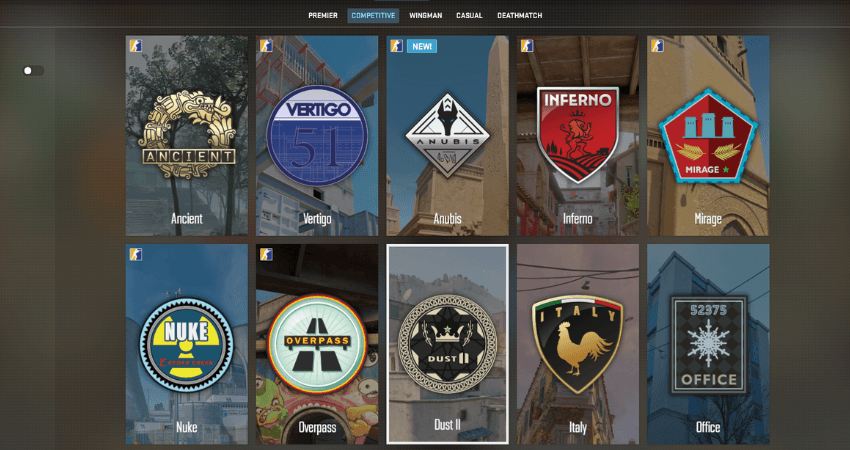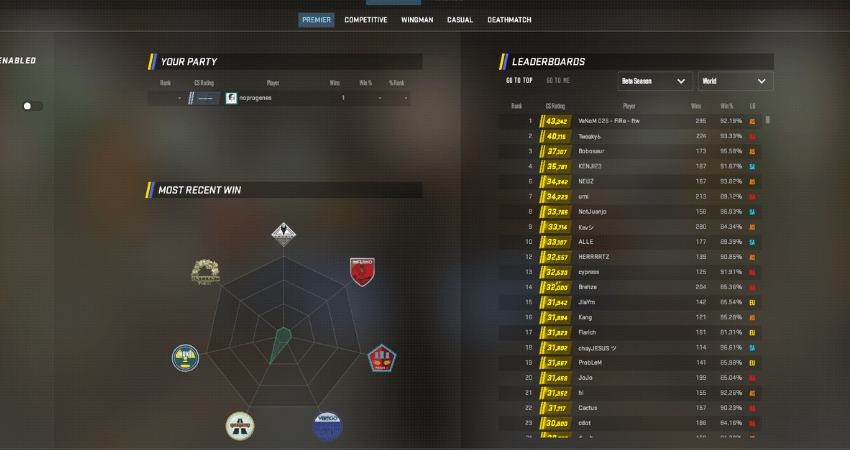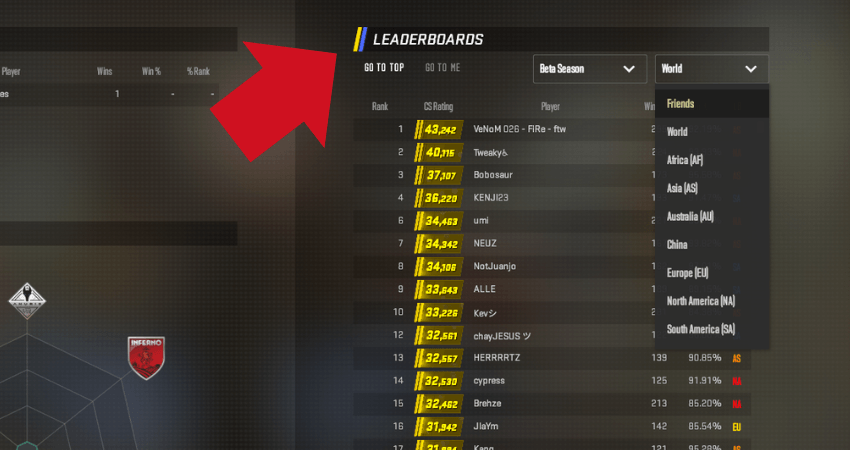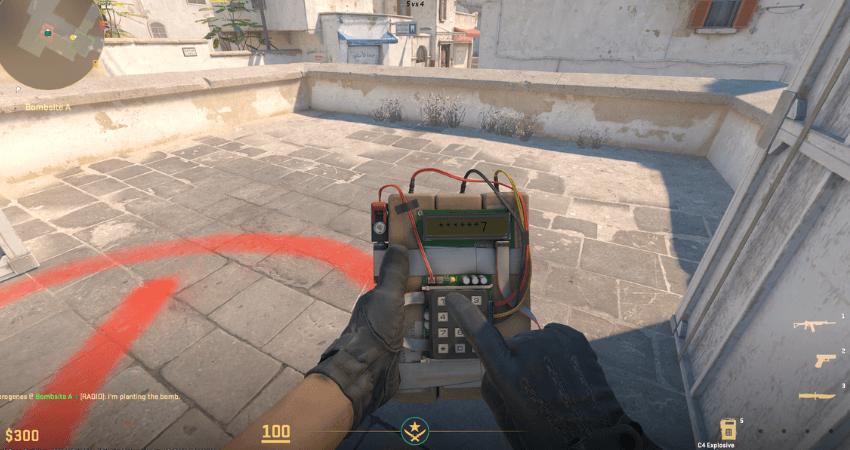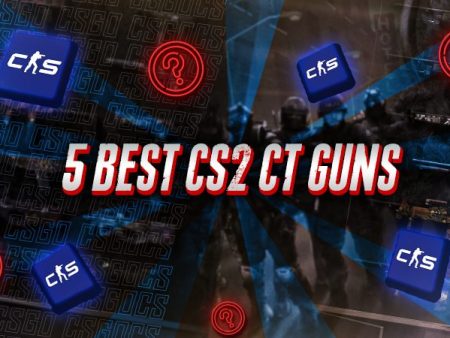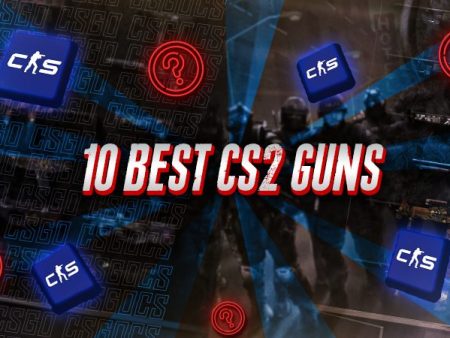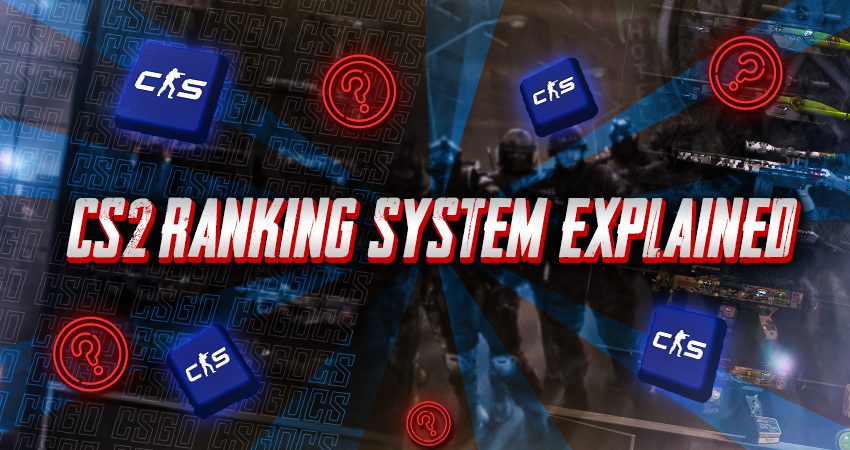
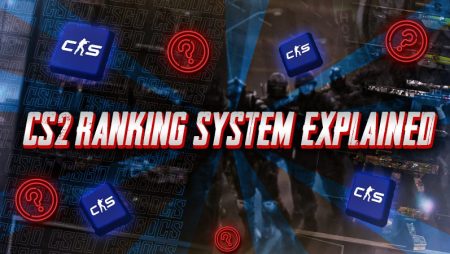
There are multiple components that make up the ranking system in CS2. To become a part of the CS2 competitive scene, you must have at least a general idea of these components. However, not everyone understands how the ranking system in CS2 works. To help you with that, here is the complete guide on the CS2 ranking system, where we explain everything, including the types of ranking systems and more.
Key Takeaways
- CS2 features two main game modes, Competitive and Premier, each with its own unique ranking system.
- The Competitive mode uses 18 ranks to represent a player’s skill level, while the Premier mode uses a numeric rating divided into seven tiers.
- Map-based ranks in CS2 encourage players to diversify their map knowledge and gameplay skills.
- To rank up or achieve a higher rating in CS2, players should focus on playing the objective, teamwork, and consistency in matches.
Types of Ranking Systems in CS2
As the skill cap expands and players get better at the game, the Counter-Strike competitive scene gets even more cut-throat, where just being a Global Elite or any of the other higher ranks isn’t enough. Because of that, Valve introduced significant changes to the game’s ranking system with Counter-Strike 2.
Firstly, while the game has the traditional competitive mode that the Counter-Strike community loves, it got some overhauls to its ranking system and how competitive matches play out. Secondly, players can experience a brand-new competitive game mode in CS2 called Premier. Fortunately, the community seems to be liking these changes.
Counter-Strike players got access to the Premier mode days before the official launch of CS2, and now it has become a major part of the game. However, the regular competitive mode wasn’t available at that time. While both modes are similar, they have completely different ranking systems.
The Competitive Mode & Ranking System in CS2
Competitive is the flagship mode of CS2 and has been a part of Counter-Strike for several years. This game mode is also tied to CS2’s ranking system, where players are assigned a rank only after they complete a certain number of competitive matches. As of now, that number is 10, which is similar to the ranking systems in other games.
A player’s rank in CS2 represents their skill level. The ranking system in CS2 works by factoring in your performance in competitive matches. Many calculations and algorithms work in the background so the ranking system functions properly. However, all you need to know is the better you play, the higher your rank.
As you start improving at the game and play more matches in the competitive mode, your rank gets updated based on your newer skill level. CS2’s ranking system considers each match you play, giving you a new rank at the end of a competitive match. However, your rank doesn’t necessarily have to go up after every competitive match.
In CS2, your rank can either go down or stay the same depending on how much and in which direction your performance has changed. Plus, if you don’t play the game for a long time, your rank may reset, requiring you to play one more competitive match to receive a rank, which can also be higher, lower, or the same as the previous one.
List of CS2 Ranks
CS2’s ranking system is made up of 18 total ranks. Most of the CS2 gaming community falls within the eight mid-tier ranks, with almost all having a similar skill level. Not many players lie in the top and bottom end of the rank spectrum. However, the top two ranks have the least amount of players since reaching those ranks takes a lot of work. Here is the list of all ranks in CS2.
- Silver I / Silver 1 (S1)
- Silver II / Silver 2 (S2)
- Silver III / Silver 3 (S3)
- Silver IV / Silver 4 (S4)
- Silver Elite (SE)
- Silver Elite Master (SEM)
- Gold Nova I / Gold Nova 1 (GN1)
- Gold Nova II / Gold Nova 2 (GN2)
- Gold Nova III / Gold Nova 3 (GN3)
- Gold Nova Master (GNM)
- Master Guardian I / Master Guardian 1 (MG1)
- Master Guardian II / Master Guardian 2 (MG2)
- Master Guardian Elite (MGE)
- Distinguished Master Guardian (DMG)
- Legendary Eagle (LE)
- Legendary Eagle Master (LEM)
- Supreme Master First Class (SMFC)
- Global Elite (GE)
Map-Based Ranks
One of the biggest changes to Counter-Strike’s competitive ranking system that came with CS2 is the addition of map-based ranks. With this change, the ranking system of CS2 got split even further, with an individual rank for each map. But how does that work exactly in CS2? To explain that, let’s dive deeper, looking at a few examples.
When you start a competitive match in CS2, you get the option to select one or a group of maps. While it isn’t recommended, you can play on a single map for your entire CS2 journey. However, you’ll only get a rank for the map you played competitive matches on. In other words, you’ll have a separate rank for each map.
Let’s say you played 20 competitive matches on Mirage and 20 on Dust 2. Because you know Dust 2 much more, you performed better on that map and received a higher rank than the one you got for Mirage. For example, you might be Master Guardian I (MG1) on Dust 2, while only Gold Nova 1 (GN1) on Mirage.
Why Did Valve Introduce Map-Based Ranks?
You might be wondering why Valve split the ranking system in CS2 further into map-based ranks. One of the main problems with Counter-Strike was that many gamers played competitive matches only on one or two maps. For instance, a huge chunk of the Counter-Strike gaming community played Dust 2 all their lives. But why is that a problem?
Since the overall skill cap of the Counter-Strike player base evens out at the higher end, their map knowledge is one of the only distinguishing factors that determine who is the better player. In other words, two Global Elite players could lie on vastly different skill levels, not because one has a better aim, recoil control, or game sense, but because one has more map knowledge.
A player who reached Global Elite after playing a wide mix of maps would be better overall than someone who reached the same rank by playing only on one map. The performance of the player who played on multiple maps would stay consistent no matter what map you throw at them. However, the player who played only one map would perform worse if required to play on the same rank but on another map.
Because of that, many Global Elite or other high-ranked players stayed with one map, fearing losing if they tried out other maps. Fortunately, the CS2 map-based ranking system solved this issue. Now, even if you are a Global Elite on one map but don’t know some other map very well, say Overpass, you won’t have to worry about coming across global elite level players if you play on that map.
We have seen two main benefits of this map-based ranking system until now. Firstly, it encourages players to try out different maps even after reaching a higher rank by playing just one. According to what we’ve observed in the community, many CS2 players now play on multiple maps. Secondly, it allows players to have a different goal once they’ve reached one of the higher ranks.
CS2’s Rating System & Premier Game Mode
Now, let’s discuss the new competitive game mode in CS2, Premier. The overall gameplay of matches in this Premier mode is identical to matches in the competitive mode. A Premier match includes two teams of five for 24 rounds, with a side switch, where Terrorists become Counter-Terrorists and vice versa, at the 12-round mark, and the first team to win 13 rounds wins the match. That’s exactly how regular competitive mode matches play out.
The difference between the two modes is with the ranking system and the map selection process. First, let’s talk about the latter. Unlike competitive matchmaking, you don’t get to choose the exact map you wish to play on while entering a Premier match. Instead, there is a ban phase where each team gets to ban certain maps. Here is how the ban phase in Premier mode plays out:
- Step 1: Team A bans the first two maps from the pool.
- Step 2: Team B bans three maps from the remaining pool.
- Step 3: Team A bans one of the two remaining maps.
- Step 4: Team 2 decides where to play: Terrorists or Counter-Terrorists.
Now, let’s move on to the Premier mode’s ranking system, which is quite different than the one for the regular competitive mode. When you complete ten Premier matches, you get a rating based on your performance, which is a numeric value instead of the ranks like Master Guardian or Gold Nova you get from competitive matchmaking.
Plus, there is a leaderboard where you can compare yourself with the ratings of other players. This leaderboard also has several filters that you can set to see the specific rating structure for players from a particular region or your Steam friends list. In other words, you can compare your rating either with the entire world, with the specific region that you play in, or just with your friends.
Another thing to remember about the Premier mode ranking system is that, unlike the ranks from the competitive mode, the rating you receive is not map-specific. Instead, you got a single rating that represents your skill level in general for all maps combined. Valve didn’t make the same map-based split to the rating system since the problems with selecting the exact map you want to play on don’t apply to the Premier mode.
That said, there are some similarities between the ranking system for both the competitive and the Premier game modes. For instance, you’ll need to improve your gameplay to move up the ranks for competitive matchmaking or up the leaderboard by getting a higher rating. Like in competitive, your performance in each Premier match gets analyzed, and you get a new rating based on that.
CS2 Rating Ters
The classification of CS2’s ranking system into 18 different ranks for the competitive mode helps players distinguish skill levels. However, that wouldn’t be possible with the numeric rating system, where all you know about a player’s skill level is a number. Fortunately, the rating a player receives in the Premier game mode for CS2 is much more than just a number. It is divided into 7 rating tiers, with each tier representing a different skill level. Rating tiers are distinguished by rating ranges and by color, as follows:
- Gray: 0 to 4,999
- Light Blue: 5,000 to 9,999
- Blue: 10,000 to 14,999
- Purple: 15,000 to 19,999
- Pink: 20,000 to 24,999
- Red: 25,000 to 29,999
- Yellow/Gold: 30,000+
As you might have already guessed, the gray rating tier represents the lowest skill level, and the yellow/gold rating tier represents the highest skill level. Currently, the player at the top of the rating leaderboard in the world has a rating of over 42,000 points. As the skill cap grows and more players enter the higher rating tiers, Valve might decide to change the ranges for the rating tiers. However, there is no confirmation about this.
How to Rank Up and Get a Higher Rating in CS2
Be it ranking up to a higher rank in the competitive mode or reaching a higher rating tier in the Premier mode, what you have to do in the match is pretty much the same. That’s because matches for both modes don’t have any differences in terms of gameplay. The ranking system and rating system in CS2 look at your rank/rating, your opponents’ rank/rating, and your consistency in playing matches.
That said, Valve has not yet revealed the precise factors that the ranking system in CS2 takes into account while evaluating your rank. This secrecy prevents players from exploiting the ranking system. However, the main things you should focus on to rank up or reach a higher rating include playing the objective, playing as a team, not stressing about kills, and playing consistently.
Conclusion
The ranking system in CS2 primarily comprises two game modes, including the competitive mode that Counter-Strike players already know about and the new Premier mode. However, the competitive ranking system uses ranks to represent the player’s skill level, while the Premier rating system uses numerical rating values divided into seven tiers. Regardless of the mode, focus on improving at the game, and you’ll reach the top ranks and ratings soon.
FAQ
What is the difference between the competitive mode and the Premier mode in CS2?
Competitive mode is the traditional game mode with traditional ranks, while Premier mode uses a numeric rating system. Premier mode also has a different map selection process, with a ban phase.
How do I earn a rank in the competitive mode of CS2?
To earn a rank in the competitive mode, you need to complete a specific number of competitive matches. Currently, you must complete 10 matches to receive your initial rank.
Can my rank in CS2’s competitive mode go down after a match?
Yes, your rank in CS2’s competitive mode can either go up, down, or remain the same after a match, depending on your performance. Winning and performing well typically lead to rank increases, while losing or underperforming may result in a rank decrease.
Why did Valve introduce map-based ranks in CS2?
Map-based ranks were introduced to encourage players to diversify their map knowledge. This system ensures that players who excel on one map are not necessarily ranked higher overall. It also promotes variety in gameplay.
How do I rank up in CS2’s Premier mode, and what are the rating tiers?
In Premier mode, your rating is determined based on your performance in matches. To rank up, you need to consistently perform well in these matches. The rating tiers in Premier mode range from Gray (lowest) to Yellow/Gold (highest), with each tier representing a different skill level.
